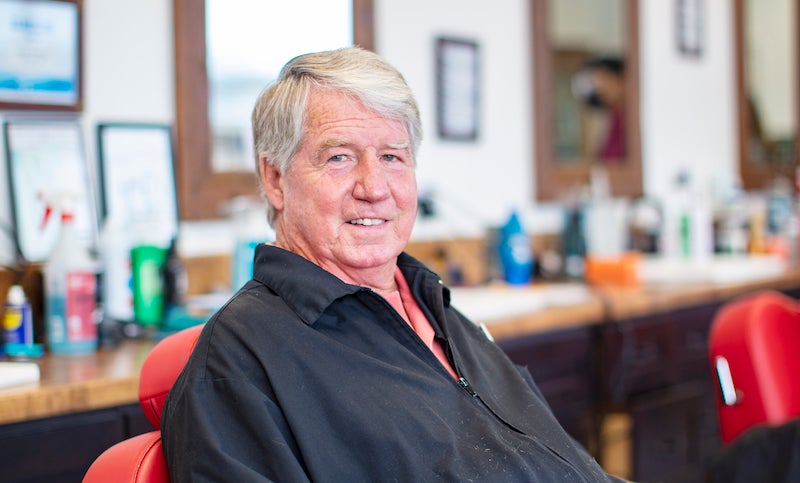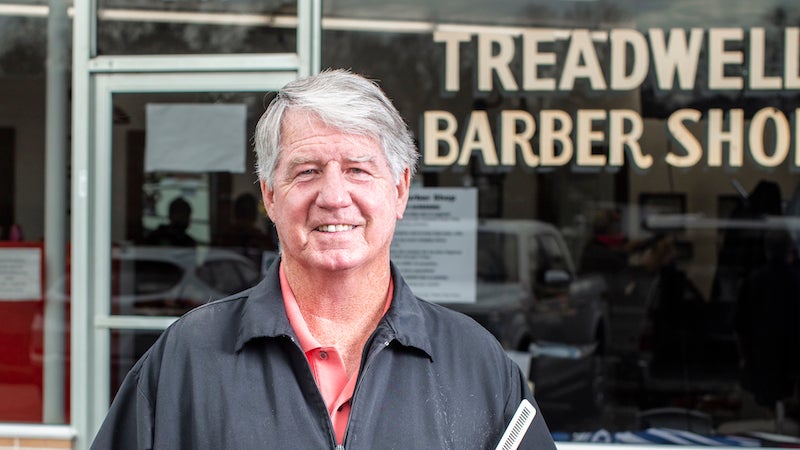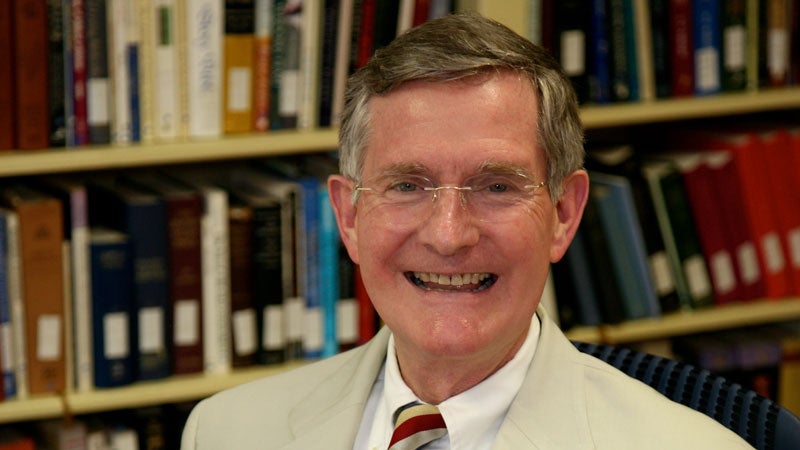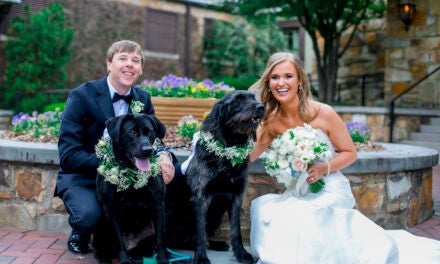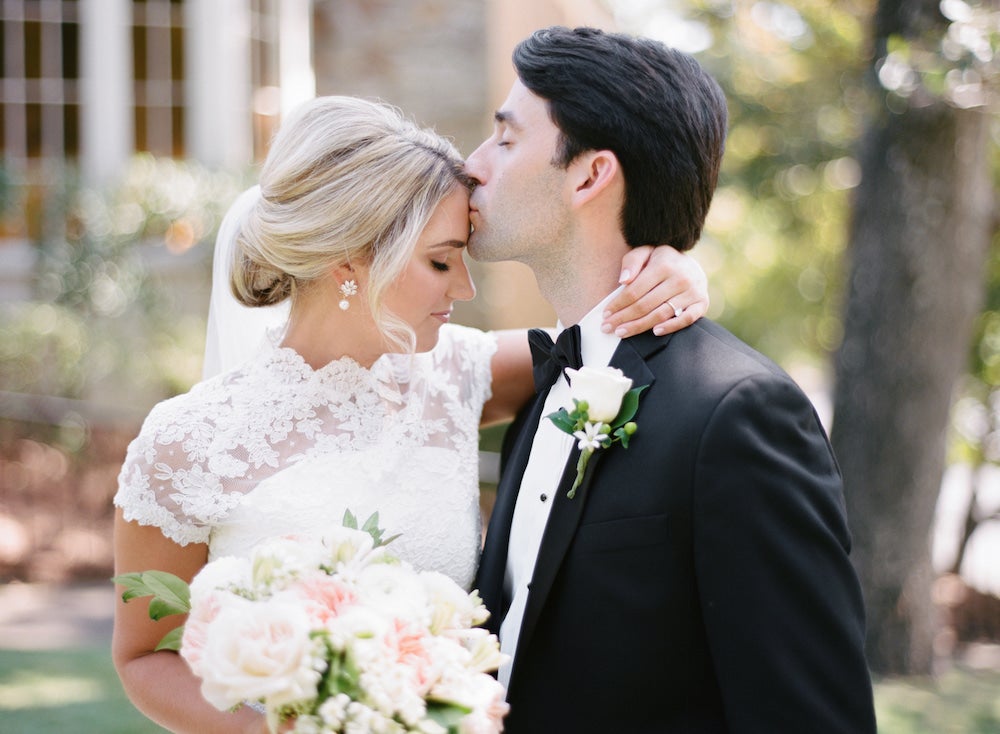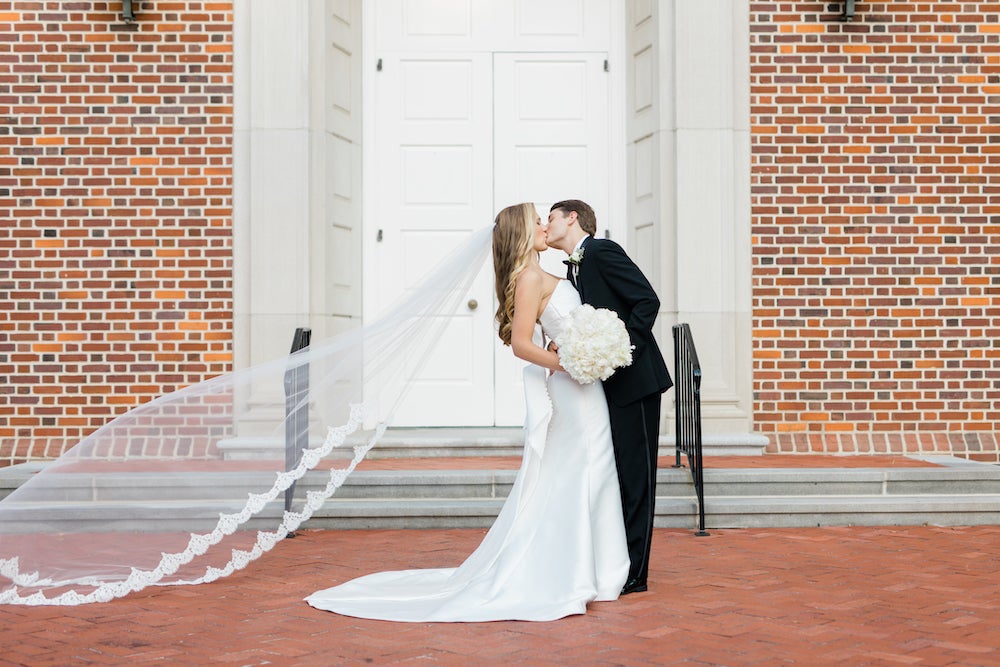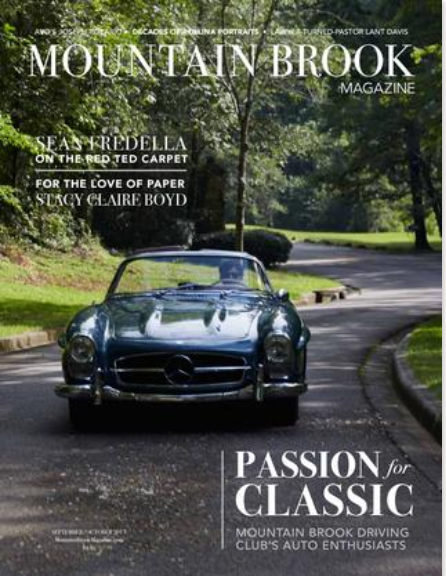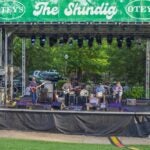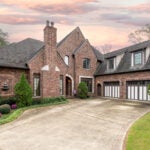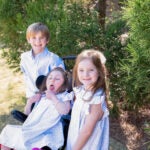By Rick Lewis
Photos by Patrick McGough
Whether or not you have ever been inside, you’ve certainly seen it. As the last surviving retail tenant of the old Mountain Brook Shopping Center, you are familiar with its exterior walls: neat columns of yellow-brown brick under the shade of a retro-Tudor half-gabled roof. You can recall the wide, glass windows that wrap in an L-shape around its sides, its classically painted name adorning both: Treadwell Barbershop.
Indeed, Treadwell’s is not only the temporal anchor to the Mountain Brook of yesteryear, but it also stands firmly planted as the physical definition of continuity. As the decades have come and gone and nearby buildings have been felled and been rebuilt, Treadwell’s has remained. Now an island surrounded by a sea of grey gravel and chain-link fence—Lane Parke’s currently unfinished Phase II development—it is truly a relic of a bygone era.
As Lauren Murphy Ward explains it, “It’s been there forever. And I don’t feel like anything’s changed, which I can appreciate… It’s like a The Club or like a Gilchrist; it just sort of feels exactly as if time stood still. And it’s exactly the same as it was in my childhood.” Lauren grew up less than a mile away from Mountain Brook Village and remembers her father and brother going there and the red, white, and blue barber pole adorning its front.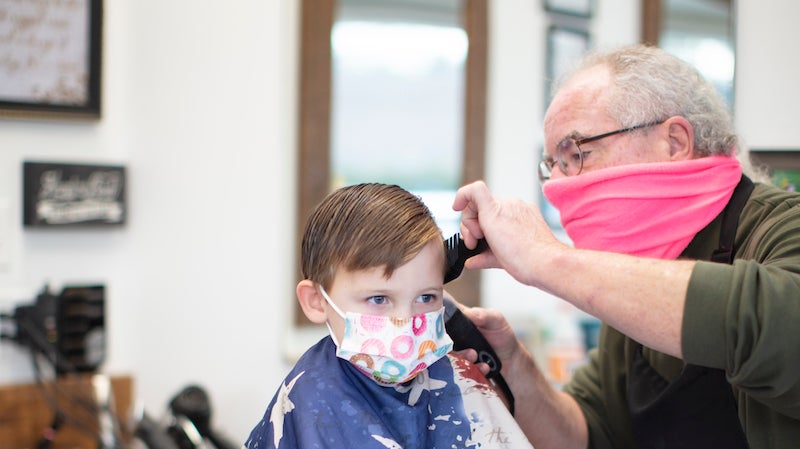
Though, like any truly great barbershop, Treadwell’s exists not only as a building but also as an element of its community, a “third place,” if you will. For the over 60 consecutive years it has been in existence, Treadwell’s has been a place for the young and old to get a haircut, a pleasant conversation and a sense of the thread that weaves Treadwell’s into this town. The old wall-length mirror that used to grace the back of the shop reflected back many a familiar face and familiar style: a classic, if traditional, cut.
Of course, while women can certainly get a cut at Treadwell’s if they so desire, it has traditionally had a male-dominated clientele. And like other elements of traditional “male culture” that get handed down from father to son, Treadwell’s seems to follow family lines. As Lauren continues, “I feel like it has just become a part of our family history that that’s something the boys do together.” Her husband, Scott, a Mobile native who became a Treadwell’s convert before their wedding (“they couldn’t turn a frog into a prince, but they came pretty close”), now takes their two sons with him when he goes.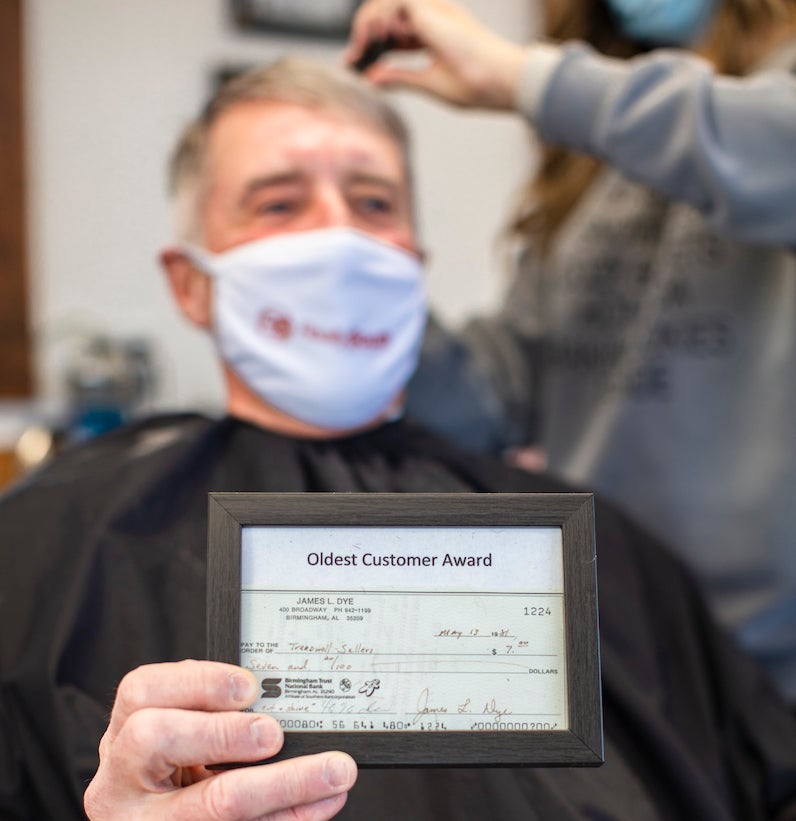
_______________________________
Treadwell Barber Shop was originally opened in 1961 by J. T. Treadwell, and it has been the only tenant of its signature triangular lot since that time. J. T. was a staple of the shop for decades and was a figure of Mountain Brook history all the same, although he retired many years ago and is now in his 96th year of living. It was in 1998 that J.T. and his son, Jimmy, sold the store to Steve Bishop who owns and operates it to this day.
An ironworker out of the Local No. 92 union by trade, Steve had never planned to be a barber. But, on the hunt for an investment opportunity and at the prodding of his son who was dating the daughter of one of the Treadwell barbers, he took a tour of the shop that was up for sale at the time. “I actually intended to just buy it and kind of let this girl run it for me,” he says. “And then after I got over here for a little while just to see how things went. I enjoyed it and went to barber school and learned to be a barber…The Lord kind of moved me in this way.”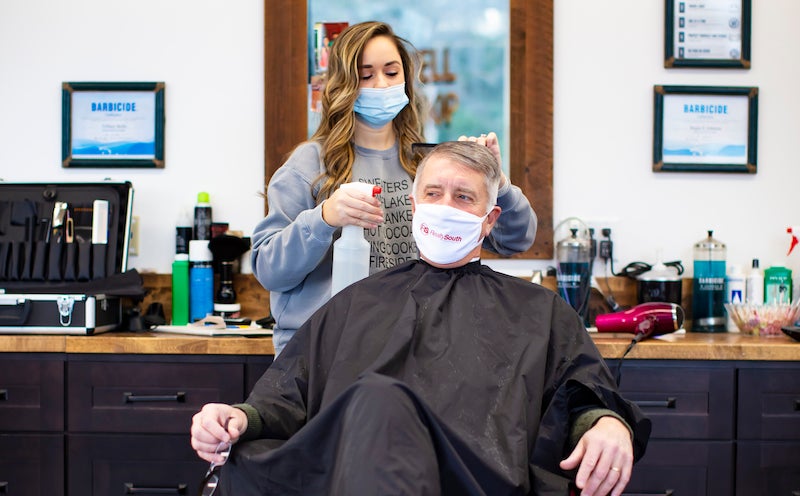
It was the confluence of both a spiritual nudge and wanting to be out of the construction industry siphoning so much of his family time away from him that gave Steve the final convincing he needed to plunge in head first. And after a stint at the Academy of Hair Design in Centerpoint, Steve joined the ranks of barbers himself. However, it was a bit of a daunting start. J. T. was still cutting hair, as were several 30-year veterans of the shop. “And here comes a Johnny-come-lately,” Steve recalls. “I remember when it was the first day I came in, and I remember sitting down in that chair thinking, ‘If I could just get 10 haircuts a day.” But, much to his credit, he did well over 10 cuts and has averaged above that ever since he took over the helm.
While Bishop has managed his barbershop as a successful business for more than 20 years and through economies thick and thin, he also sees the shop as more than a place to get a trim. He feels the pulse Treadwell’s gets from the people that go there and support it, and to him, it can feel a lot like a family. “You’ll have people who come in here and bring their children and they know the children that are already in here,” he says. “Since 1961, there’s a lot of people that’ve come in here. A lot of them still know each other, go to church together and play ball together. It’s just like a big old family sometimes.”
And much like Scott Ward’s story of his father-son Treadwell trips, Bishop has a photo of a family, four generations worth of men, sitting in chairs down the line. Treadwell’s isn’t transient, and neither are its customers, loyal not only to a store but to a piece of shared history.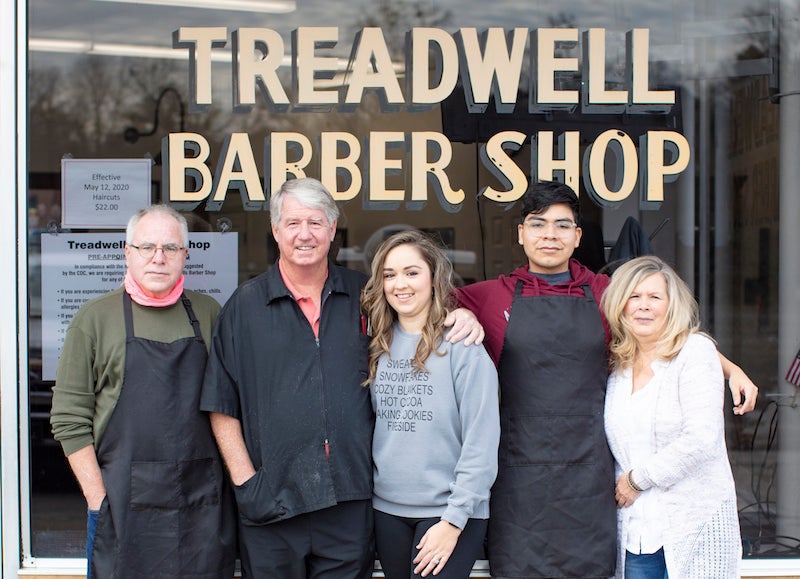
_______________________________
I went to Treadwell’s myself on a Tuesday afternoon in the fall. The front door was left open (maybe because of COVID, or maybe because the fresh air was so nice), and a breeze blew the front blinds gently back and forth.
Steve Bishop, grey and white haired with his glasses down on his nose and wearing a blue and white striped barber’s shirt, was quietly working with a customer. A toddler in a small, blue cape sat getting his curls cut in his father’s lap. The buzzing white noise of clippers was occasionally interrupted by small talk, but otherwise the atmosphere had a zen-like quality to its steadiness.
A few things in the shop had changed since I was a kid. Bishop has replaced the crimson chairs with bright-red leather ones with padded diamond backs, the black and white floors have been swapped for a more muted hardwood, and the mirror-wall has been replaced by individual wood-framed mirrors behind each station. But the old soda machine remained and so did the nostalgic feeling of getting a trim before baseball practice.
However, on the front door is pasted a copy of an artist’s rendering of what the new Treadwell’s might look like, and gone is the Tudor point, the building’s triangle turned more into a box. I don’t think any aesthetic changes can warp what Treadwell’s means to so many of us though. That definition lies inside.